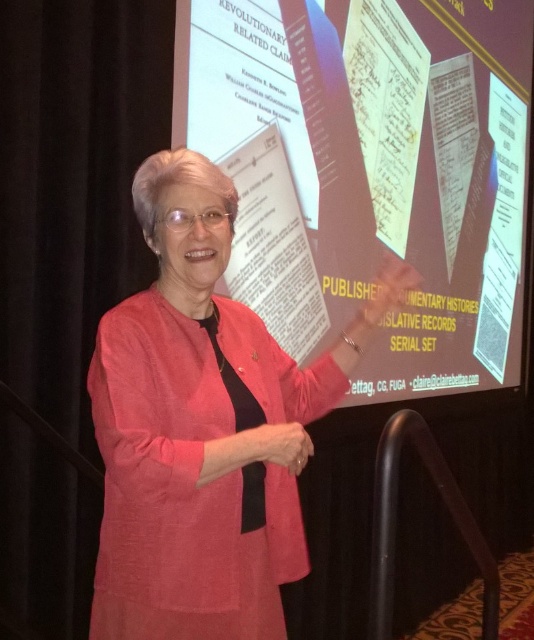SpringBoard, an official blogger for the 2015 NGS Family History Conference, is pleased to offer a review of this Skillbuilding lecture, presented Friday, 15 May 2015:
F348: Claire Bettag, CG, FUGA, “Petitions, Memorials, and Remonstrances in Early America,” reviewed by Amy Larner Giroux, Ph.D., CG, CGL
Claire Bettag’s informative lecture entitled “Petitions, Memorials, and Remonstrances in Early America: Good Genealogical Sources” covers historical resources concerning petitions to Congress. Her examples focus on the First Federal Congress of the United States, which ran from 1789 to 1791.
More than 600 petitions were processed in this particular congressional session. Claire explains that there were two main reasons for citizens to petition Congress: to request redress for grievances and for monetary or property loss (“petitions” or “memorials”) and to request that Congress not take certain actions (“remonstrances” or “addresses”).
Claire covers online and offline published sources. She stresses that published sources, such as the U.S. Serial Set, are derivative resources and should be used as a step towards locating the original records. Her selected examples and extensive knowledge of the subject make it clear that there is a wealth of historical and genealogical data available in these records. They include not only document transcriptions, but also analytical essays on context. Claire uses an example of “Dependent Survivors of Deceased Soldiers” listed in Revolutionary War claims that identify widows and children. Another example is a record related to a twice-married Revolutionary War widow, which lists birth and death years for both husbands, the widow’s birth and death information, and both marriage dates.
It is very helpful to hear about the background of petitioning, which is rooted in English history and the Magna Carta. Petitioning in the United States continued through the nineteenth century and Claire’s explanation of how the process became the basis of today’s lobbying efforts is intriguing. Both the names of the petitioners and the historical context found in these records make them an excellent resource for researchers.
 A recording of this lecture may be ordered from Jamb Tapes, Inc.
A recording of this lecture may be ordered from Jamb Tapes, Inc.
CG, Certified Genealogist, CGL, and Certified Genealogical Lecturer are service marks of the Board for Certification of Genealogists, used under license by Board-certified genealogists after periodic competency evaluation, and the board name is registered in the US Patent & Trademark Office.


